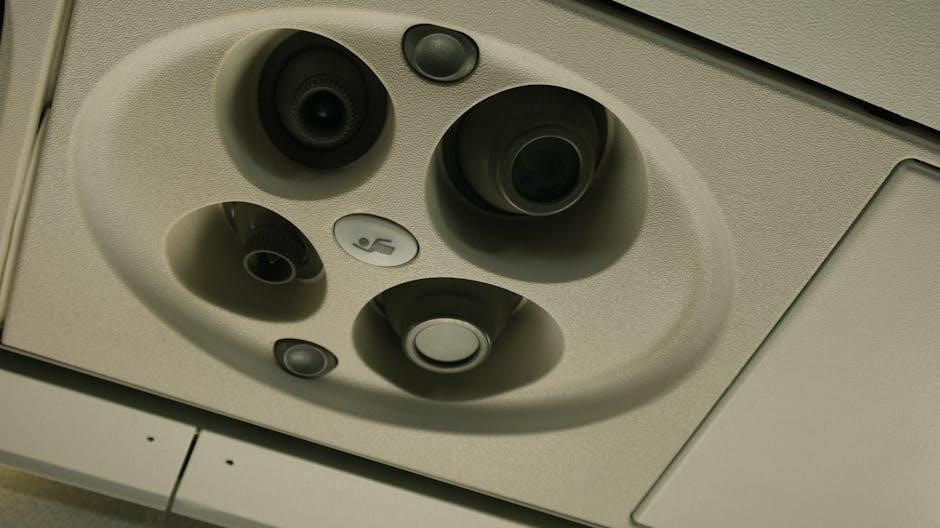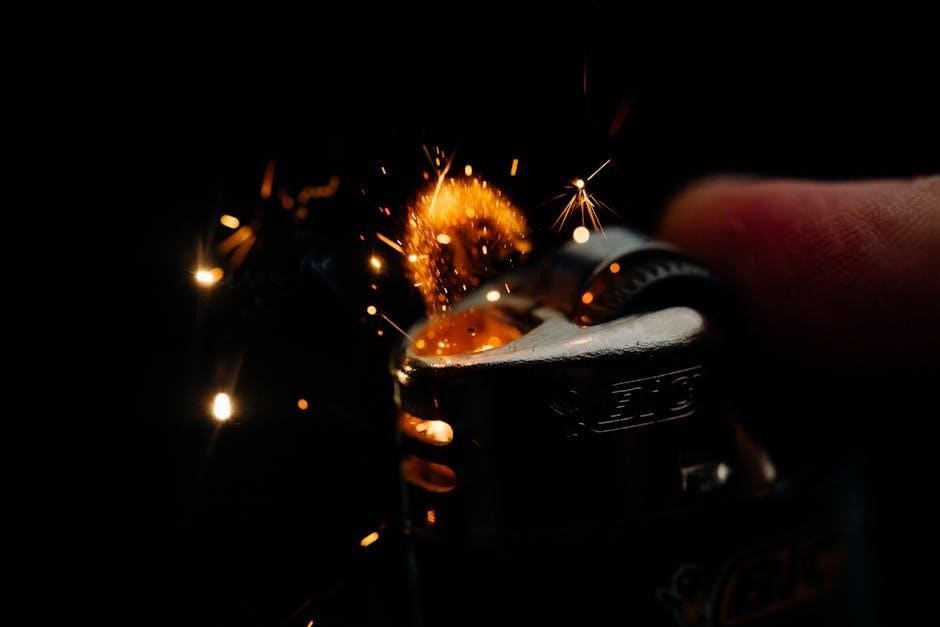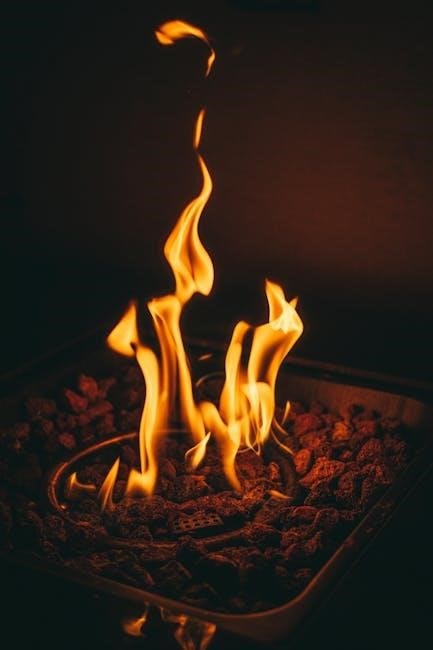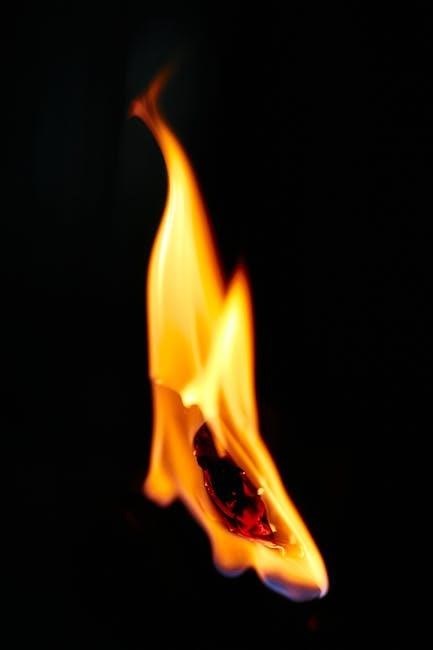Heat and Glo pilot lighting instructions provide guidance on safely operating fireplaces, including
precautions
and steps to ensure proper function and maintenance of the appliance always.
Understanding the Basics of Pilot Lighting
To understand the basics of pilot lighting, it is essential to know the components involved, including the pilot tube, thermocouple, and spark igniter. The pilot light is a small flame that ignites the main burner, providing a safe and efficient way to operate the fireplace. The pilot light is typically fueled by natural gas or propane, and its operation is critical to the overall function of the fireplace. By understanding how the pilot light works, homeowners can better troubleshoot issues and maintain their Heat and Glo fireplace. The basics of pilot lighting also include understanding the importance of proper ventilation, gas supply, and electrical connections. This knowledge will help homeowners to safely and effectively operate their fireplace, and it is crucial to follow the manufacturer’s instructions for pilot lighting. Proper installation and maintenance are also vital.

Preparation for Lighting the Pilot Light
Ensure the area is clear and follow the manufacturer’s
guidelines always carefully.
Removing the Glass Panels and Accessing the Firebox
To access the firebox, start by removing the glass panels, which is a crucial step in the process of lighting the pilot light on your Heat and Glo fireplace. This will give you clear access to the internal components of the fireplace. Make sure to handle the glass panels with care to avoid any damage or injury. Once the glass panels are removed, you will be able to see the firebox and the pilot assembly. The firebox is the area where the flames will be produced, and it is essential to ensure that it is clean and free of any debris. By following these steps, you will be able to successfully access the firebox and prepare it for lighting the pilot light. Always refer to the manufacturer’s instructions for specific guidance on removing the glass panels.
Locating the Gas Supply Valve and Pilot Assembly
Locate the gas supply valve and pilot assembly towards the back of the firebox, beneath the logs, to proceed with lighting the pilot light safely always.
Identifying the Spark Igniter and Pilot Tube
To identify the spark igniter and pilot tube, look for the black or red button that controls the spark igniter, typically located near the pilot assembly. The pilot tube is usually a small metal tube that carries gas to the pilot light. It is essential to verify that the pilot tube is not clogged and that the spark igniter is functioning correctly. The spark igniter should produce a spark when the button is pressed, indicating that it is working properly. By identifying these components, you can ensure that your Heat and Glo fireplace is functioning safely and efficiently. Proper identification of these parts is crucial for successful pilot light ignition and overall appliance operation, as outlined in the owner’s manual and installation guide. The spark igniter and pilot tube play critical roles in the lighting process.

Common Issues with Heat and Glo Fireplaces
Homeowners face issues like no pilot light due to clogged tubes always.
No Pilot Light Problems and Possible Causes
No pilot light problems can occur due to various reasons, including a clogged pilot tube, a faulty thermocouple, or insufficient gas supply, which can be resolved by checking the gas valve and pilot assembly. The pilot tube can become clogged with debris or dirt, preventing the pilot light from igniting, and a faulty thermocouple can prevent the pilot light from staying lit. Insufficient gas supply can also prevent the pilot light from igniting, and it is essential to check the gas valve and pilot assembly to ensure they are functioning correctly. By identifying and addressing the underlying cause, homeowners can resolve no pilot light problems and enjoy their Heat and Glo fireplace. Regular maintenance and inspection can help prevent these issues and ensure safe and efficient operation of the appliance. Proper installation and operation are also crucial.
Step-by-Step Instructions for Lighting the Pilot Light
Follow the manual for specific steps to light the pilot light safely always using correct procedures.
Opening the Gas Supply Valve and Igniting the Pilot
To ignite the pilot, first locate the gas supply valve and open it, allowing gas to flow to the pilot assembly. The spark igniter will produce a spark, igniting the pilot light. Ensure the valve is fully open to provide sufficient gas supply. It is essential to follow the manufacturer’s instructions for the specific model of Heat and Glo fireplace. The pilot light should be a steady, small flame. If the flame is not steady or is too large, adjust the valve accordingly. Always refer to the owner’s manual for specific guidance on operating the appliance. By following these steps, you can safely and successfully ignite the pilot light on your Heat and Glo fireplace. Proper ignition is crucial for safe and efficient operation of the appliance.

Important Safety Precautions and Warnings
Always follow safety guidelines when operating the appliance to ensure safe usage always and prevent accidents.
Do’s and Don’ts for Lighting and Operating the Appliance
To ensure safe and proper operation of the Heat and Glo fireplace, it is essential to follow the do’s and don’ts for lighting and operating the appliance. Always refer to the owner’s manual for specific instructions and guidelines; Do use only your hand to push in or turn the control valve, and do not use any tools or objects that may cause damage. Do not touch any electrical switches or try to light the appliance if you smell gas or suspect a leak. It is also important to remove all foreign objects and clean the pilot area regularly to prevent clogs and ensure proper function. By following these guidelines, you can enjoy safe and efficient operation of your Heat and Glo fireplace, and always follow the manufacturer’s instructions for maintenance and repair. Regular maintenance is also necessary.

Troubleshooting and Maintenance Tips
Regularly inspect and clean the pilot area and
verify
proper function always ensures safety.
Verifying Unobstructed Air Circulation and Checking for Foreign Objects
To ensure safe and proper operation of the Heat and Glo fireplace, it is essential to verify unobstructed air circulation and check for foreign objects. This can be done by inspecting the area around the fireplace and removing any objects that may be blocking airflow. The manufacturer’s instructions provide guidance on how to perform this task, and it is crucial to follow these instructions carefully. Regular checks can help prevent issues with the pilot light and ensure the fireplace operates efficiently. By taking these precautions, homeowners can enjoy their Heat and Glo fireplace while minimizing the risk of accidents or malfunctions. Checking for foreign objects and verifying air circulation is a simple yet important step in maintaining the fireplace. Proper maintenance is key to safe and efficient operation of the appliance always.

